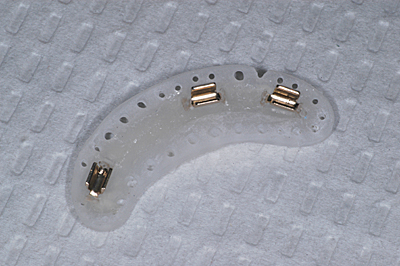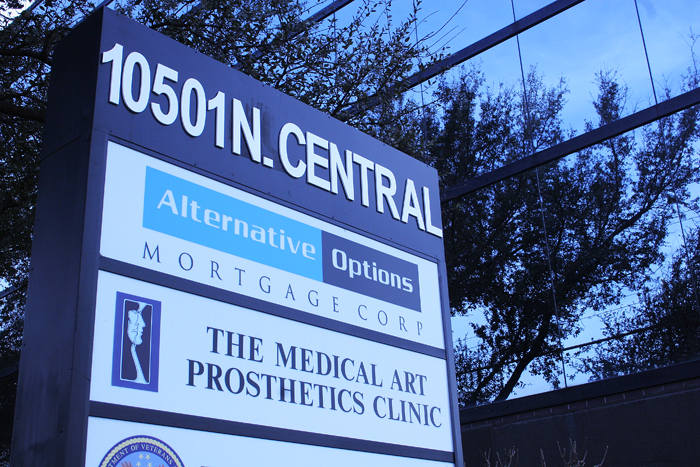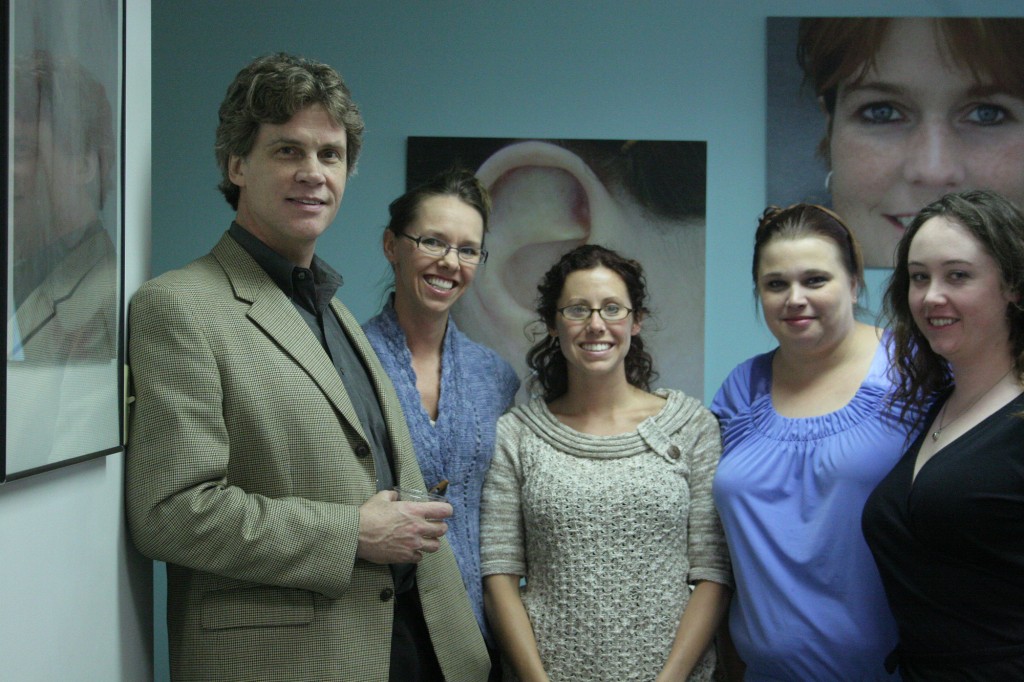Archive for the ‘anaplastology’ tag
My First Patient (reposted)
I recently found this, going through some old files. I’d initially posted it here years ago and then pulled it down when I was having some disagreements with a teacher (no one mentioned here). But it’s a nice little memory of my first time working with a patient.
Sometimes I still miss getting to work with people like this in my current career path. I love what I do now, but there was something special about anaplastology that just isn’t like anything else I’ve ever done. I was pretty good at it too.
Anyway, here’s an old and dear memory of it
____________________________________________________
Well today has gone just fantastically.
Today I had my first delivery of a prosthesis to a patient. And I couldn’t have asked for it to go any better. We made it a little heavy on the red, at the patient’s request. Red is the color that fades the fastest, and he didn’t want to come back in another year. I was so nervous about overdoing it, but it came out fantastically. He was so happy, and Dr. Reisberg even warned me about raising the bar too high on my first patient.

It looked really good on him, and I’d show you a picture of that, but I didn’t ask his permission to show those photos online. Anyway, he left with a smile on his face, and even as red as the ear was, it looked quite natural against his face. The only tell was when you were looking at both ears and comparing. And because we worked so much color into the instrinsic silicones, it will continue to look good for a long time. I’m so excited.
We got to try something with the acrylic substructure too. I was working with Camille Rea this time, and she tried something with the substructure that I think was just brilliant. Rather than relying on a small lip to mechanically hold the acrylic inside the silicone, she drilled holes directly into it. The way everything fit together, it was possible to do that, and I thought it was a great idea to provide extra mechanical retention.

You can see here how the silicone wraps around the acrylic substructure, allowing access to the clips. Those little holes are going to help prevent any possible separation of the materials as the prosthesis ages.

I feel like we sent this man away with a really good prosthesis that’s going to last a long time. I love that. What a fabulous experience.
Bespoke
A couple years ago, a friend told me about Bespoke. She pointed them out to me because their goals so sounded like my own with regard to patient care. Last week, I was listening to TED talks online and came across one called “Scott Summit: Beautiful artificial limbs.” Sure enough, I come to realize that Scott Summit is behind Bespoke, a company that wasn’t ready to hire an anaplastologist when I contacted them, but I still have to say a company that seems to get it.
http://www.ted.com/talks/scott_summit_beautiful_artificial_limbs.html
If anything, I would have to say that the only thing these guys are missing is the option of a prosthesis which mimics the part that was lost accurately. For some, that’s the best solution. But that aside, I think that they are doing great work. They’re doing great work that I would like to see come in to the realm of prostheses that are made to be more accurate, or just prosthetics in general. So often in medical care of any kind, it seems to be the individual that is lost. These guys aren’t making that mistake. How refreshing!
Animation and 3D capture software
So, last Friday, I had a little time in the morning to watch a tutorial. My co-worker, Alex, had recommended this one, and she was right. For those of you learning Cinema 4D like I am, this tutorial not only gets into UVW painting and pelt mapping, but is also a really great modeling tutorial.
So, I’m telling her how great this is, and she tells me that Greyscale Gorilla (the company that puts these out) is appearing that very night at a Cinema 4D/ live music event (SXSW, really brings all kinds of events out of the woodwork here in Austin.)
So I went, and it was a really good event. When I got there, a man named Nick (and unfortunately I can’t remember his last name) taught us a bit about using Cinema 4D’s cloner and animating spheres along a spline. I definitely learned a few things from that talk. And then the next speaker was a man named David Lewandowski who spoke about his use of Cinema 4D in a new music video. His talk was fun because it was the first time I’d seen anyone integrating this stuff into actual video to do special effects. And what really caught my attention was the 3D scanning software he was using to capture the actors’ faces into his 3D software and integrate it within the video.
Back when I was training with the craniofacial clinic at UIC, there was a lot of attention to 3DMD and working with CT and MRI data to get 3D data for both surgical planning and also facial prosthetic development. I have spoken with various anaplastologists over the last few years about this as well. So when this guy gets up and talks about how he pulled together this video on a shoestring budget and paid about $50 for some Russian software that he used to upload photos of the actors (all taken from the same camera), and got these seemingly accurate 3D models out of them, I had to ask him about it later.
He told me that the software was called Agisoft Photoscan, and that there is also an Autodesk product currently in beta testing called Photofly. The friend I brought with me to the event told me that some people are even hacking into their XBox 360 gaming consoles and managing to capture 3D data through the technology already present in those machines as well. I find all of this to be very exciting from the perspective of what potential it brings to a field like anaplastology where you have a strong need for accurate 3D information about patients, but not always the financial structure to afford the latest and greatest technology at every turn. This also opens the door to better international consultation. If all one needs on the spot is a decent camera and an internet connection, then better information can be sent overseas allowing for better preparation before a patient makes the trip in person. Possibly, you could even come up with a good temporary piece for someone to wear in the interim while they are waiting on their final prosthesis to be made.
I leave you with this short YouTube clip of someone playing with Agisoft’s software to capture movement.
And I’d better get going because there is another one of these little 3D get together’s tonight!
IAA Member
In other official news, I am officially a member of the International Association of Anaplasatology.
This site is a great resource for finding an anaplastologist, or just learning more about the field. And as a member, I’ll have access to journal articles and any job listings that may come up. I should have done this months ago.
News Coverage
Medical Art Prosthetics is in the news this week! That’s where I was just doing my anaplastology internship in Dallas, not even two months ago. Looks like their work with the CPAP masks has been catching some attention here. You can read all about it, or even watch the KDAF-TV news report here.
http://www.the33tv.com/news/kdaf-custom-fit-cpap-story,0,2709005.story
Where Things Are
I know I haven’t written much this week. Been reacclimating to Chicago, and fighting off a cold in the process. But the cold is finally fading and it’s time to be sending off resumes far and wide to all those places that might have use for an anaplastologist just out of school. I’m also finalizing the animation and finishing my research project paper for graduation this summer.
I’m attaching my resume here for download as a PDF. It’s a shiny and new resume, and I’m rather fond of how it turned out. It does have my current contact information, so here’s hoping that this isn’t a terrible idea to post here. If ever there was a time to put it all out there, I suppose that now would be that time.
End of an Internship
And there you have it, the first of my anaplastology tools – one spatula, one #7, and one dappen dish for work with acrylic. Last Friday marked my last day as an intern in Dallas. As a parting gift I was given these tools, along with a couple other fun odds and ends.
My time with the Medical Arts Prosthetics Clinic has been really great. I feel like I’ve learned so much. And I got to work with a patient from their initial consultation on through the creation of a prosthesis, and onto delivery. I had done all of those steps before, but never all towards one prosthesis, not from the point of an initial consultation anyways. I got to do a lot of things with this internship, but seeing that patient through was really great. And I know that this is what I want to do.
Here is a photo of the lot of us out at the clinic. Listing left to right, that’s Greg Gion, Allison Vest, Colette Shrader, Sky Miranda, and me, Sara Egner.
And now it’s on to finishing up my project research, graduating, and making a career for myself. Wish me luck! Or better yet, send me job offers! I’m about to be on the market!
Searching for Anaplastology – Thoughts on Reaching Out
You often hear stories about patients who don’t have access to an anaplastologist, or don’t even know that they exist. Most people I encounter have never heard of anaplastology until I tell them. So I can’t help wondering how people come about finding care when they don’t get a simple recommendation from their surgeons.
The first thought is internet. Maybe I’m biased because I keep a blog, but I think that a lot of people look online for such answers. But with most of the world never having heard of an anaplastologist, what would they look under? Would they know to type in somato or facial prosthetics? Maybe they would look up specifically a nasal prosthesis or auricular prosthesis. I’ve checked, and searching for “fake ear” gets you a lot of jewelry products. As someone who often has a difficult time finding the things I want online, it pushes me to wonder about real world methods of learning about us.
So, we know that many surgeons recommend patients directly. And that really is an ideal scenario. But recently I met a speech pathologist, and we got to talking about the similar types of cases that we see. And I thought that there is another road in that you don’t often hear about. Audiologists are often aware of us, not only because of shared patients, but also because of shared surgical equipment when it comes to implants. Bone anchored hearing aides are implanted into the skull in much the same way as our implants for prosthetic retention in patients who decide to go that route. But who else can we work on bringing awareness to that will eventually help us reach the patients who need our services? I suppose that anyone working with cancer patients makes sense. I wonder if genetic counselors and people working with congenital defects generally know about us. And maybe we should work on getting our profession known out there among emergency teams, and anyone working with vehicular accident victims.
I am convinced that the scarcity of work out there for anaplastologists is not because of any lack of patient need, but more a lack of awareness in general of the care we offer. There is, in this world, a small selection of incredibly talented individuals capable of making quality prostheses that can truly improve the quality of life for a lot of individuals. I believe that we need to make ourselves better known to the population at large. No one who has suffered the loss of a body part should be left without the option for prosthetic rehabilitation. What we do, should simply always be presented as an option.
Anaplastology Conference
Well, I’m back from the International Anaplastology Association Conference in sunny Sarasota, Florida now. It was a lovely event, and so great to get to meet so many people working in anaplastology and hear their stories and what they’re up to. We also teamed up with the International Symposium of Bone Conduction Hearing-Craniofacial Osseointegration this time, so there was a bit of a crash course for many of us in the details of bone conduction hearing aides, though most of the lectures remained separate.
The first day, some were busy taking certification exams for anaplastology. I haven’t done this myself, nor am I even close to being qualified to take them (it takes 18 cases, handled solely start to finish, and photo documented along the way), but it seemed like those who did were relieved to be done afterward. And what better way to relax after a test like that, or get to meet people for the first time if you’re like me and only just got there, than to have everyone out to the hotel’s beach house for a meet and greet get together with drinks, hors d’oeuvres, a little music, and a positively stellar view of the sunset.
Then bright and early Thursday morning, we kicked off the lectures with an opening ceremony followed by our first two invited lecturers, Barbara Boyan, and Anders Tjellström. Barbara spoke on “Cell-Material Interactions: What They Mean Clinically,” and Anders spoke on “The Evolution of Titanium Implants.” After that, we broke into anaplastology specific lectures and bone-conduction hearing lectures, with workshops happening at the same time in other rooms.
Personally, I stuck with the anaplastology lectures all day Thursday, and again on Friday morning. There was a great deal of emphasis throughout these lectures on matters of surgical success in the placement of implants with regard to both the osseointegration of the implants into bone, as well as the peri-abutment tissue, and avoiding skin reactions there. There was also a lot of talk about measurement and new technology for dealing with 3D forms as we do.
Then Friday afternoon, I attended my first of the workshops offered. It was David Trainer’s “Mold Making: Materials and Techniques,” wherein he went over the use of some different materials he’s worked with to make sturdier, lighter, and yet very detailed molds. I know I’d like to give some of those materials a test drive myself.
After his workshop, came another workshop in “Color Science and Acuity in Anaplastology.” This one, I believe was put together by Paul Tanner, but then presented by Art Schmehling of X-Rite. He spoke of various color systems, and how lighting affects color. He brought attention to the inherent weaknesses we share of being able to remember colors with precision, and our susceptibility to color fatigue. One interesting recommendation he had was to keep a space in the room where you see a patient for color matching painted a good neutral gray so that your color matching isn’t compromised by the surrounding environment. He also mentioned briefly a bit about metalics and how they affect perceived depth. I don’t believe that I’ve written about it here, but I’ve been mulling over some ideas about metalics in silicone for the last couple weeks. So after the workshop, I was really excited to get to ask a few questions of a bona fide color expert about my thoughts there.
Saturday we only had a half day there. We began with two more invited speakers as per our usual program openers. Ichiro Nishimura’s “Systems Biology and Genetic Networks of Osseointegration” lecture was particularly interesting I thought. He told us about his work at UCLA, and it sounds like they are finding a connection between vitamin D deficiency and osseointegration failure. I’d never heard of that before, but if you type in vitamin d, and osseointegration into Google, you get a lot of links from research being done in this direction. You also get some information about a circadian rhythm connection, which he brought up as well. I won’t even attempt to try to tackle explaining his work in any depth here, but I would recommend that you look for it if you are interested.
And then the conference wrapped up with one last round, for which I chose to go back to the workshop room again, and hear a panel discussion on “Creative Problem Solving for Challenging Craniofacial Cases,” featuring Julie Jordan Brown, Gillian Duncan, Susan Habakuk, and Greg Gion (who started the clinic where I am presently interning.) This was a nice opportunity to listen to the kinds of strategies more experienced anaplastologists have taken with their more complicated cases.
All in all, it was a very educational event, and a great opportunity to meet people and better understand the whole of the anaplastology field. I’m so glad that I went.




